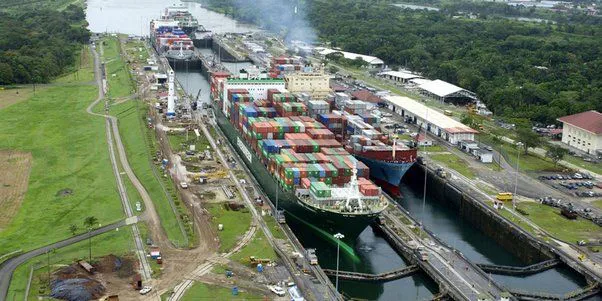Why is the clogging of the Panama Canal built in the 20th century no better than the Suez Canal in the mid-19th century, and since the canal is so narrow for large ships, why not build it wider?
In fact, the Panama Canal was really difficult and expensive to build, and the Panamanian government and Americans wanted to build it as wide as possible. The Narrowest Part of the Panama Canal is actually 105 meters wide, which is actually quite good for the 1914 year in which it was built. Even if the Titanic passes through here, it can have 20 feet of leeway.
The plan the French tried was a sea-level canal like the Suez Canal. Just dig a big hole. But when the French had been dry for some time, they discovered a problem: the Pacific Ocean was actually more than a foot above the Atlantic, and with the influence of the tides, any ditch at sea level would be a turbulent current. This completely exceeded the estimated difficulty of the project, and far exceeded the original budget of the project.
So the French gave the mess to the Americans who wanted to come and take advantage. The U.S. had planned to use locks and raise ships high enough to cross the central mountains. A dam was built in the middle to create a huge lake, and the water in the lake was used to operate the locks. This is a bit the same as the Three Gorges Dam's solution to the problem of excessive water level difference, that is, to use the buoyancy of the water, open the gate in sections, and slowly send the boat from one water level to another.
The problem of water level difference is solved, but there is a hidden danger with multi-level locks, that is, the locks require a lot of water, an average of 52 million gallons per passing ship, and this water comes from lakes. If Panama only has enough rainfall to provide enough water. So the Panama Canal is not like the Suez Canal, just need to dig a wider ditch.
However, with the advancement of technology, the technology of ship locks is constantly updated. Panama's lakes were not large enough to accommodate larger locks, but the new locks operate the locks by cleverly using recycling pools to collect water. The new locks can be seen on the right side of this satellite image, which are the three three square recycling pools.
